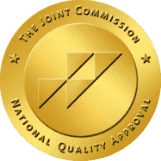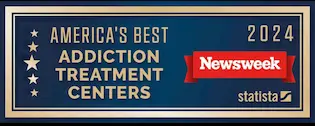What is a High Dose of Klonopin
What is a High Dose of Klonopin
What is a High Dose of Klonopin?
What is a high dose of Klonopin? Read on to learn the answer to this question, along with potential side effects of the drug.

Article Contents
What Is Klonopin (Clonazepam)?
Klonopin is a benzodiazepine drug with a high potential for addiction. It is possible to develop an addiction to Klonopin in a matter of weeks, even when taking it as prescribed.
There are several possible Klonopin dosages which can lead you to wonder what a high dosage of Klonopin may be. The Klonopin dosage for anxiety differs from that of the Klonopin dosage for panic attacks, which can also cause confusion when trying to understand what is seen as a low dose as compared to what a high dosage is.
Find Help Now
Why Klonopin is Used
Klonopin is a benzodiazepine approved by the Food and Drug Administration to treat anxiety and panic disorders. In addition, providers may use Klonopin for other “off-label” uses, such as managing symptoms of essential tremors and tardive dyskinesia.
Klonopin works by calming and slowing the activity of the brain and parts of the nervous system that send messages throughout the body. It is often referred to as a tranquilizer or sedative because of its calming effects. Unfortunately, the effects of Klonopin are felt quickly and are typically short-lasting. Therefore, to achieve “lasting” results, it is necessary to take Klonopin multiple times a day to maintain effective symptom control. For many, this can lead to tolerance and addiction in a very short time.
What is a High Dosage of Klonopin?
Klonopin in tablet form is available in three different doses, including 0.5mg, 1mg, and 2mg. In its generic form, clonazepam is available in either tablet form or an orally disintegrating tablet form in the same dosage. How much Klonopin you can take in a day depends on several factors, including age, body size, the reason for prescribing Klonopin, and pre-existing medical conditions.1What is the Maximum Daily Dosage?
The maximum daily dosage of Klonopin is 20mg; however, the maximum dose is not recommended for treatment of all approved conditions. For example, when Klonopin is prescribed to manage panic disorder symptoms, the standard dose is 0.5-2mg taken twice daily. However, when used to manage seizure disorders, the standard dosages are higher, at anywhere from 0.5-5mg taken three times per day and goes up to 20mg daily at the highest.2It is also important to note that Klonopin dosing is different for children. The Food and Drug Administration has approved Klonopin for treating pediatric seizure disorders at a maximum of 20 mg daily for children only over ten years of age.3Klonopin Dosage Restrictions
There are some instances where pre existing medical conditions limit or exclude Klonopin as a treatment option. Currently, those who cannot use Klonopin are people with severe liver disease, acute narrow-angle glaucoma, and those who have had an allergic reaction to Klonopin or similar benzodiazepine drugs like , Valium, or Ativan in the past.
There are also preexisting conditions that preclude usage, such as a history of substance use disorders or other medical conditions where the maximum dosage of clonazepam would be contraindicated.
Klonopin Optimum Dosage for Adults and Children
Klonopin is a drug with a high potential for addiction. As a result, the optimum recommended dose is the minimum effective dose to achieve symptom relief and management. The starting dose of Klonopin is usually lower than the recommended dose, requiring a patient to gradually increase how much Klonopin they take until optimum symptom management is achieved.
Seizure Disorders
The starting dosage for seizure treatment in adults is 0.5mg three times daily, with a standard dose gradually increasing to 0.5mg-5mg three times daily. In children older than 10, the dosing recommendations mimic those of adults.
Panic Disorder
The starting dosage of Klonopin for panic disorder treatment in adults is 0.25mg twice daily with a standard dose being 0.5mg-2mg three times daily. Klonopin is not recommended for panic disorder treatment in children.
Essential Tremors
The starting dose of Klonopin for essential tremors is 0.5mg generally only once a day, gradually increasing to a maximum dosage of 6mg daily if needed. Klonopin is not recommended for essential tremor treatment in children.
Tardive Dyskinesia
The Klonopin starting dose for tardive dyskinesia is 1 mg, gradually increasing to a maximum dosage of 4.5 mg daily. Klonopin is also not recommended for tardive dyskinesia treatment in children.
Signs of Klonopin Overdose
Although uncommon, a Klonopin overdose can occur if you take a higher than recommended dosage. Whether accidental or intentional, Klonopin overdose can produce a range of symptoms, including mild, moderate, or severe and potentially life-threatening medical emergencies. People who overdose on Klonopin may pass out, collapse, and find waking up to be challenging.Klonopin is a benzodiazepine, meaning that the other common symptoms of Klonopin overdose mimic those of other medications in the same class. Again, benzodiazepine overdose is not as common as opioid overdose, but it still can and does occur. Recent data from the Centers for Disease Control and Prevention show benzodiazepines like Klonopin were involved in 17% of all drug overdose deaths between January 2019 and June 2020.4
Indications of Klonopin Overdose
Examples of other common signs of Klonopin overdose include extreme fatigue, slurred speech, hypotension (very low blood pressure), drowsiness, and inability to control movement and reflexes.
What is a Lethal Dose of Klonopin?
When taken on its own, Klonopin is not typically dangerous; however, when mixed with other benzodiazepines or opioids, it can be fatal.5Some data shows very high doses of Klonopin – typically, those more than 20mgs – have resulted in patient recovery provided they receive prompt medical treatment. However, according to information provided by the Mayo Clinic, Klonopin dosages higher than 20mg can lead to fatal outcomes as well.6Treatment of Klonopin Addiction
An addiction to benzodiazepines like Klonopin requires comprehensive, supported detox and addiction treatment to overcome. Withdrawing from benzodiazepines without the support of medically assisted detox at an addiction treatment center like Iris Healing® can be dangerous and even life-threatening. Although a high dose of Klonopin itself may not lead to a medical emergency, the symptoms of Klonopin withdrawal, especially when one takes a high dose, can be far more complex.
Successfully overcoming Klonopin addiction requires several treatment types to ensure lasting recovery. The first and often essential step is detox. During medically supervised detox, medical and mental health professionals will help you gradually taper off Klonopin use. Slowly reducing your Klonopin dosage helps to minimize potential detox complications and reduce the severity of withdrawal symptoms.
Inpatient Treatment Programs
Once detox is complete, achieving lasting recovery from Klonopin addiction often requires getting help from a Klonopin rehab program. An inpatient program offers constant supervision and medical support.
Inpatient rehab is especially beneficial, as many who have a Klonopin substance abuse disorder also abuse other substances or have co-occurring mental health conditions. Inpatient rehabs are ideally suited to treat polysubstance addiction and co-occurring or dual diagnosis conditions.
Outpatient Treatment Programs
Where inpatient rehab is often the best fit for someone with a severe Klonopin addiction, an outpatient program may be a better fit for someone with a mild addiction. Outpatient rehab options still offer therapy and medical detox options, but patients can continue to work and live at home.
Outpatient rehab is generally recommended as a transitional care option between an intensive treatment program and returning home. Outpatient is typically not considered an appropriate first step in treatment for Klonopin addiction due to the potential for life-threatening withdrawal symptoms.
Get Help for Klonopin Overdose and Addiction at Iris Healing®
Ongoing treatment for Klonopin addiction generally involves continuous therapy, counseling, and medical support. The most common therapies for Klonopin addiction include experiential therapies, cognitive-behavior therapy (CBT), dialectical-behavior therapy (DBT), and alternative therapy options such as art or yoga therapy. Participation in 12-step (or similar) support groups as part of a comprehensive aftercare program is a highly recommended component of ongoing relapse prevention.

Impact of Klonopin and Opportunities for Healing
Recent studies suggest over thirty million people use benzodiazepine drugs like Klonopin. Of those, more than five million report misusing their prescription.7Klonopin addiction is quick to develop, and while the use of the drug itself is not inherently dangerous, overcoming an addiction to it may be. The safest way to detox and achieve lasting sobriety from Klonopin is to seek professional treatment. If you are ready to begin your journey toward lasting recovery from addiction, contact us today to learn more about how to get help for Klonopin overdose and addiction at Iris Healing®.
Resources- https://www.singlecare.com/prescription/klonopin/dosage
- https://online.epocrates.com/drugs/84501/Klonopin/Adult-Dosing
- https://online.epocrates.com/drugs/84502/Klonopin/Peds-Dosing
- https://www.cdc.gov/drugoverdose/featured-topics/ioad-benzo-overdose.html
- https://www.researchgate.net/publication/283724159_Acute_Clonazepam_Poisoning_Seeking_Death_Or_Attention
- https://www.mayoclinic.org/drugs-supplements/clonazepam-oral-route/proper-use/drg-20072102#:~:text=Adults%20and%20children%2010%20years,be%20determined%20by%20your%20doctor
- https://ps.psychiatryonline.org/doi/10.1176/appi.ps.201800321
Related Content
- Anxiety and Addiction
- Depression and Addiction
- Dissociative Identity Disorder and Addiction
- Trauma and Addiction




